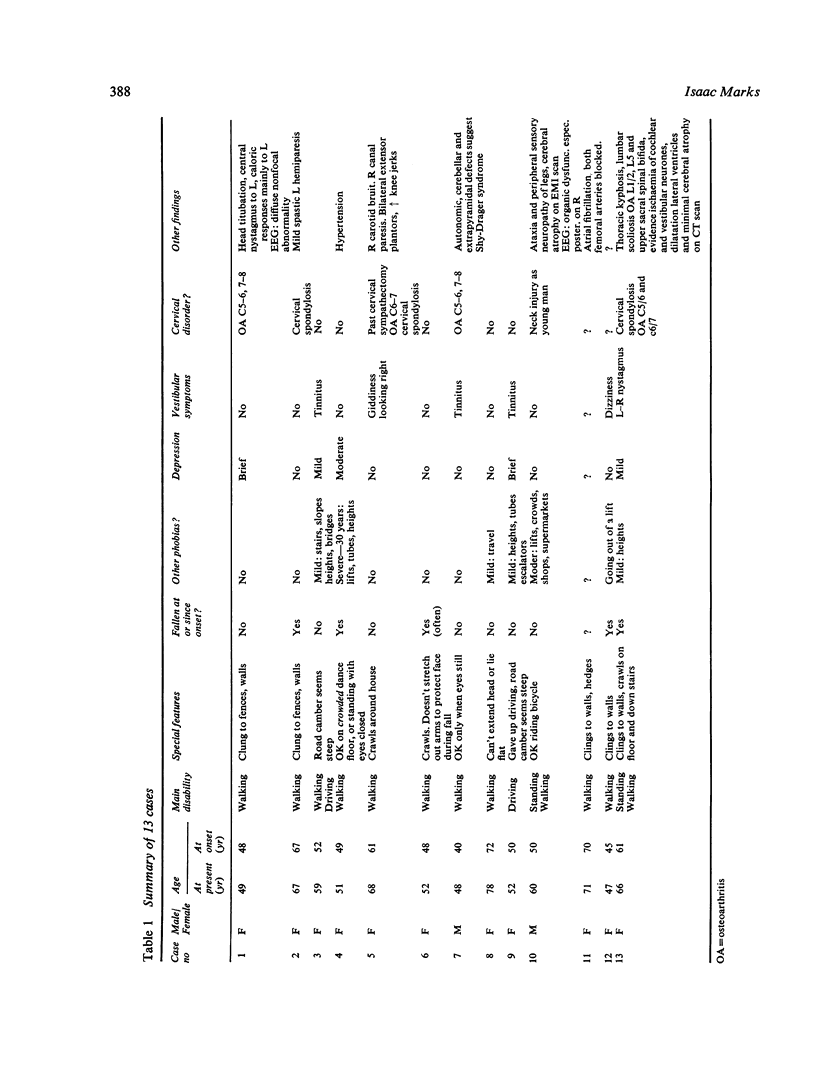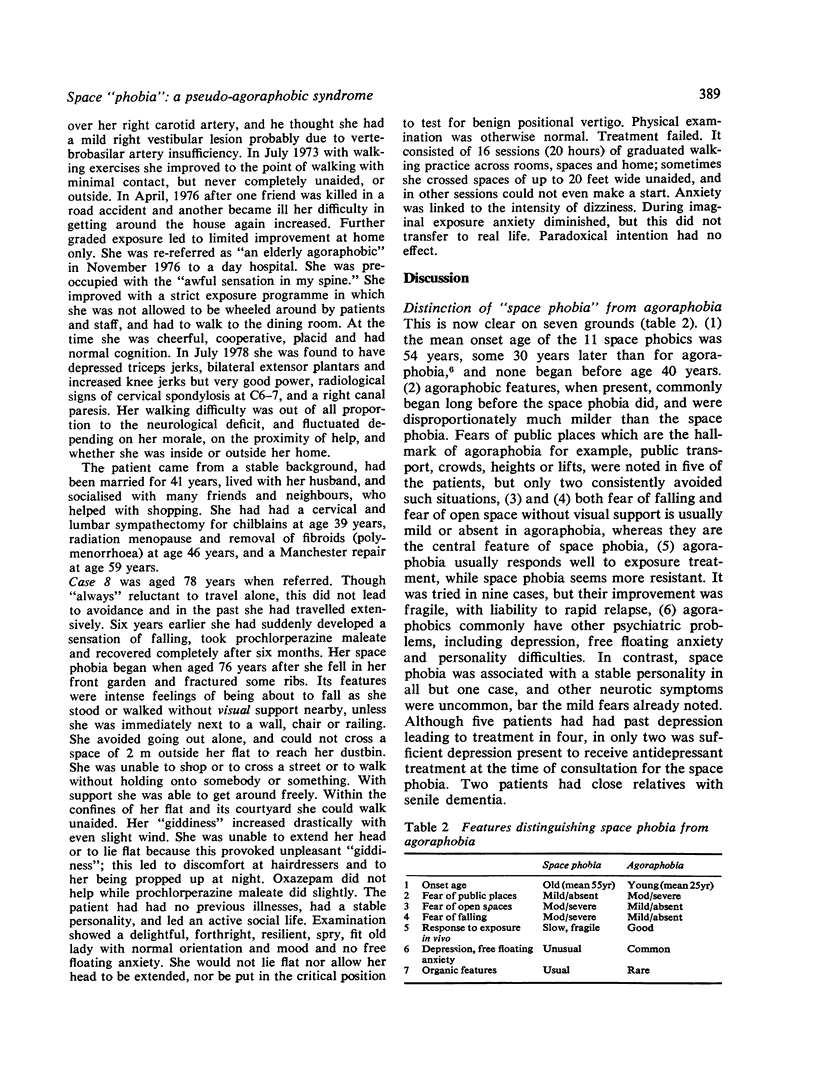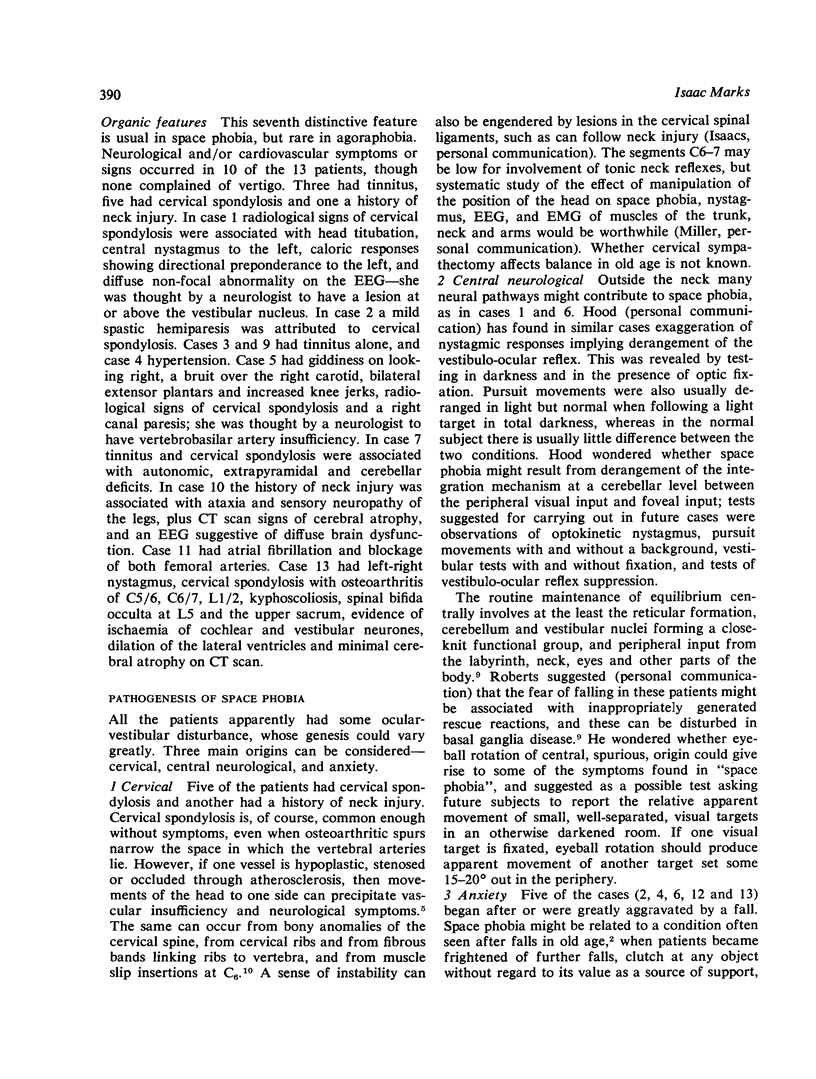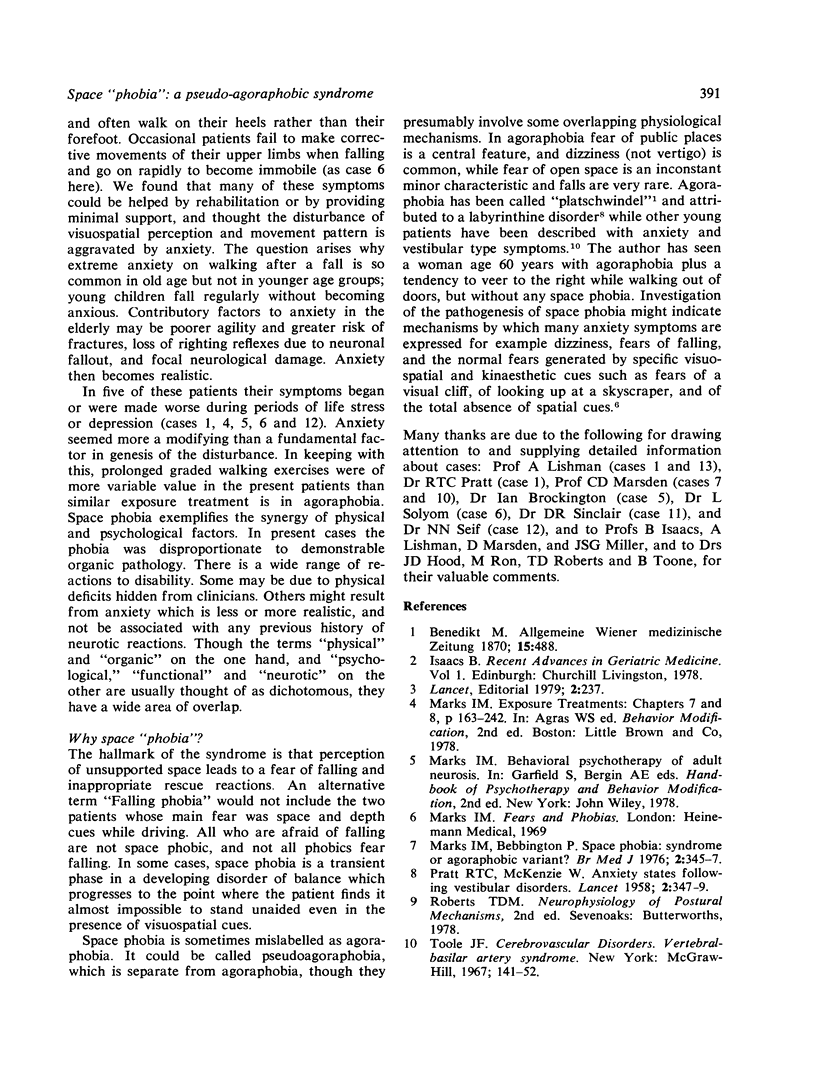Abstract
Space phobia in 13 patients is described with features distinct from agoraphobia. Its hallmark is fear of absent visuospatial support (open spaces) and of falling, unlike the fear of public places found in agoraphobia. Other distinctions are the much later mean age of onset (55 years compared with 24 years), rarity of depression or free floating anxiety, limited response to treatment by exposure in vivo, and the frequent presence of diverse neurological and cardiovascular disorders which can progress until the patient is confined to a wheelchair. Space phobia may indicate disturbed integration of vestibulo-ocular reflexes due to diverse lesions in the neck or more centrally. Better understanding of the pathogenesis may illuminate how anxiety produces some physical symptoms.
Full text
PDF




Selected References
These references are in PubMed. This may not be the complete list of references from this article.
- Marks I., Bebbington P. Space phobia: syndrome or agoraphobic variant? Br Med J. 1976 Aug 7;2(6031):345–347. doi: 10.1136/bmj.2.6031.345. [DOI] [PMC free article] [PubMed] [Google Scholar]
- PRATT R. T., McKENZIE W. Anxiety states following vestibular disorders. Lancet. 1958 Aug 16;2(7042):347–349. doi: 10.1016/s0140-6736(58)90262-9. [DOI] [PubMed] [Google Scholar]


